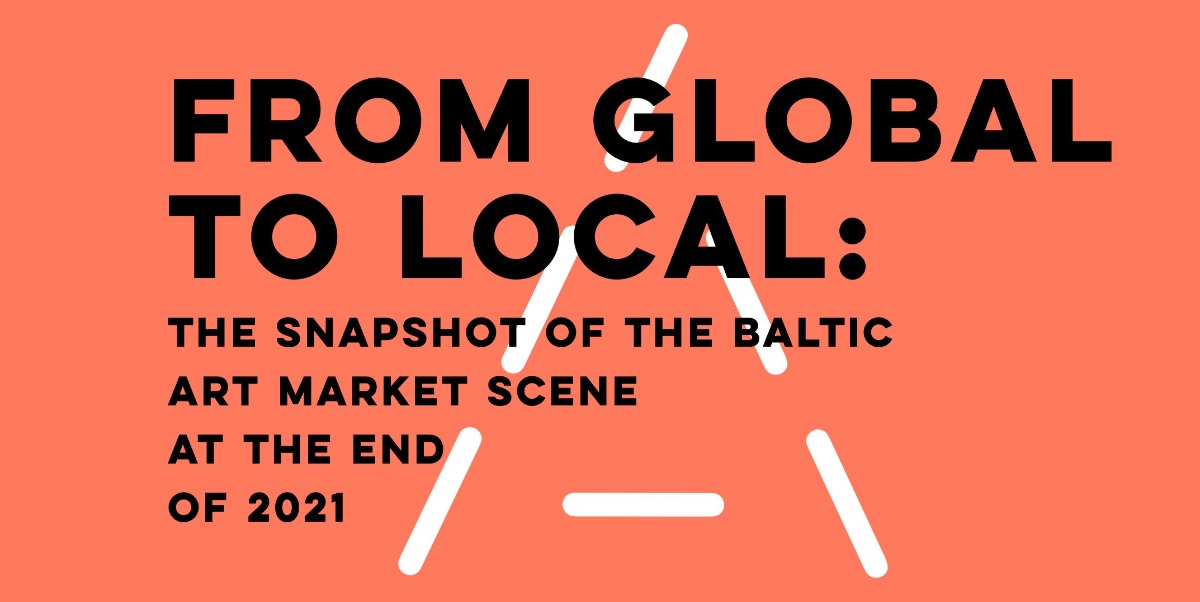
From Global to Local: a Snapshot of the Baltic Art Market Scene
Panel discussion
The second half of 2021 saw an unprecedented number of Baltic-related art projects shown during the weeks of Art Basel and Frieze London. Does this mean there’s a new wave of Baltic artists and galleries entering the art market? To look at this question more closely, Arterritory and art critic Anda Kļaviņa organised a panel discussion on the status of the Baltic art scene at the end of 2021, with the participation of Olga Temnikova (Temnikova & Kasela Gallery), Laura Rutkute (Vartai Gallery), Iveta Gabaliņa (ISSP Gallery), Inese Dābola (Riga Biennial RIBOCA) and Andrea Boghi (art collector.) The overarching conclusion is that in order to succeed globally, a local art scene is crucial.
A short overview of the contents of the discussion, with timecodes for easier navigation:
03.35 - Laura Rutkute: We realised that it is very difficult to participate in the fairs if you don’t have a strong market locally.
11.45 - Olga Temnikova: There has been extra cash and free time in Estonia during the last year, all of which helped the art market.
19.00 - Iveta Gabaliņa: You can’t judge your art market success from a single fair. I see participation in Photo Basel as a long-term run.
25.30 - Inese Dābola: We are aiming for 70 000 visitors in 2023. We had more than 55 000 for the first edition.
28.30 - Andrea Boghi: When I like the scouting an art gallery is doing, I want to know more about all of the gallery’s artists.
29.30 - Andrea Boghi: The way to get international art collectors to your country is for galleries to get together to show what is going on in the local art scene.
36.30 - Olga Temnikova: It is important to not get stuck in a provincial limbo where we think that international institutions are more important than the local infrastructure.
38.40 - Olga Temnikova: We are self-colonizing when we look too much in the direction of other international institutions. We should be proud of what we have got right here.
47.20 - Andrea Boghi: Italy has a lot of small and medium collectors who make art accessible to a much larger audience.
49.30 - Andrea Boghi: A collector’s visit to to a different country is not just about seeing artwork – it’s about discovering a different system and culture. It’s a winning formula for the Baltic system as well.
54.50 - Iveta Gabaliņa: My dream is that the local scene becomes more active so that the prices for artwork grow naturally.
1.00.00 - Olga Temnikova: The fact that there were two galleries from Estonia in Art Basel this year shows that the art system support process in Estonia is doing things right.
1.04.20 - Inese Dābola: Considering the scale of the Riga Biennial’s budget, it’s impossible to remain a private initiative for much longer.
1.08.00 - Andrea Boghi: Despite the valuable programmes private museums create, the most interesting things I see in art are still in public institutions. It’s important to have a public contemporary art museum.
1.11.00 - Inese Dābola: People ask me if there’s a “Baltic States concept” in art. Our aim is to have a stronger Baltic representation in the Biennial.
1.15.20 Andrea Boghi: Italy has a strong local art scene, but we fail to support these artists internationally.
1.17.00 - Andrea Boghi: 50 years ago, for an artist to make it, they had to travel to New York. Today, the key thing for an artist is to travel the world and experience the way different systems work.
1.19.40 - Olga Temnikova: Isn’t Ethereum – where all the crypto art is – the best place for an artist to be today?
1.21.00 - Inese Dābola: What drives me is ambition. The Biennial is an opportunity to live in the world of a curator for two whole years.
1.24.40 - Olga Temnikova: It’s ridiculous, but I’ve learned to get a sense of the art during a zoom visit to a painter’s studio.
1.28.40 - Andrea Boghi: I am curious to see what artists have been up to in the last couple of years of being locked up in their studios.